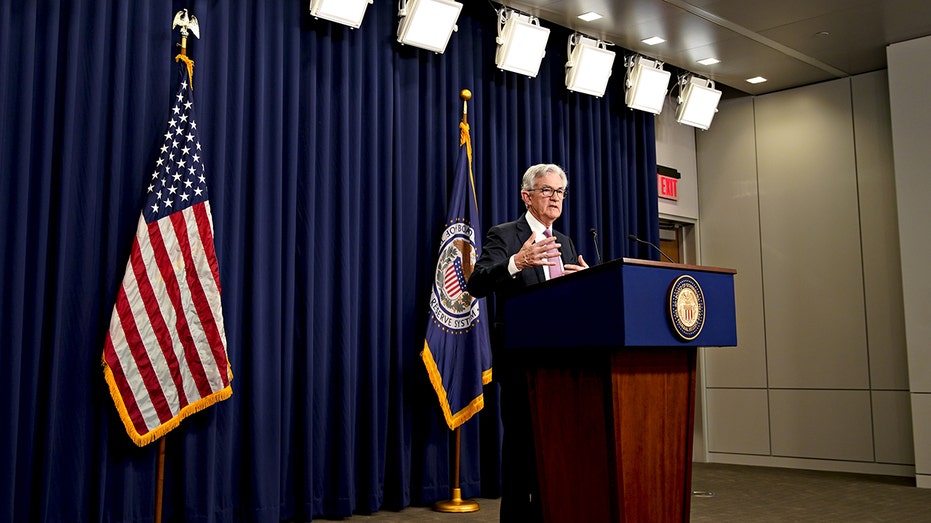Bank turmoil raises investor bets on big Fed rate cuts this year
Credit Suisse trouble rocks Fed rate-hike expectations
Sven Henrich: The Federal Reserve has a problem
NorthmanTrader founder Sven Henrich explains why the Fed must cool feelings down on 'Making Money.'
Investors have raised their bets that the Federal Reserve will deliver big interest-rate cuts this year after trouble at Credit Suisse reignited panic over a broader financial meltdown.
The probability that the Fed cuts its rates in May by a quarter-percentage point jumped to 19% on Wednesday afternoon – up from 0% the previous week, according to data from the CME Group's FedWatch tool, which tracks trading.
The odds are even steeper in June, with about one-quarter of traders pricing in either a quarter-point or half-point rate cut. Pricing in futures markets suggests the Fed will continue to cut rates throughout the year, trimming a full percentage point from a peak of 4.75% to 5% that is expected to be hit later when officials meet next week.
SIGNATURE BANK SHUT DOWN IN CONNECTION WITH SILICON VALLEY BANK COLLAPSE

Federal Reserve Chairman Jerome Powell speaks during a news conference following a Federal Open Market Committee (FOMC) meeting in Washington, D.C., on May 4, 2022. (Photographer: Al Drago/Bloomberg via Getty Images / Getty Images)
Central bankers are in the midst of the most aggressive campaign since the 1980s to crush persistently high inflation; they have raised rates eight times over the past year and were widely expected to approve another increase at their March 21-22 meeting before the banking turmoil began last week. Although the consumer price index has slowly fallen from a high of 9.1% notched in June, new data released on Tuesday morning revealed that it remains about three times higher than the pre-pandemic average.
Officials slowed the pace of rate increases to a quarter percentage point during their meeting at the beginning of February, lifting the benchmark federal funds rate to a range of 4.5% to 4.75%. That followed a half-point increase at their December meeting and four consecutive 75-basis-point moves before that. The central bank typically moves rates in quarter-point increments.
Chairman Jerome Powell took markets by surprise last week when he suggested the Fed may need to raise rates higher than previously anticipated and pick up the pace of increases amid signs of broad inflationary pressures within the economy. The hawkish commentary prompted investors to re-evaluate their expectations for the meeting, with many ramping up the odds that the Fed approves a half-percentage point hike during its March 21-22 meeting.
But Wall Street no longer sees that as a possibility after the stunning implosion of Silicon Valley Bank on Friday roiled global markets. It marked the largest U.S. bank failure since the global financial crisis in 2008.
SILICON VALLEY BANK COLLAPSE HITS COMPANIES SUCH AS CAMP, COMPASS COFFEE
Expectations shifted again on Wednesday after Credit Suisse said its biggest backer would not provide the bank with any additional funding.

The Silicon Valley Bank (SVB) logo is seen through a rain covered window in front of the SVB headquarters on March 10, 2023 in Santa Clara, California. (Justin Sullivan/Getty Images / Getty Images)
"The easing of recent inflationary pressures, combined with concerns about the banking industry, finally give the Fed reason to discuss a possible end to their tightening cycle at next week’s meeting," said John Lynch, chief investment officer for Comerica Wealth Management.
While problems at the European lender appear to be unrelated to SVB, the back-to-back issues sparked fresh fears over the vulnerability of the banking sector in the era of high interest rates. Swiss regulators stepped in on Wednesday afternoon to announce they would provide liquidity to Credit Suisse if necessary.
CLICK HERE TO READ MORE ON FOX BUSINESS
Former Boston Fed President Eric Rosengren indicated on Wednesday that he believes the central bank should pause its rate-hike cycle in the wake of the two bank failures within the U.S. and the uncertainty over Credit Suisse.
"Financial crises create demand destruction. Banks reduce credit availability, consumers hold off large purchases, businesses defer spending. Interest rates should pause until the degree of demand destruction can be evaluated," Rosengren said in a tweet.





















